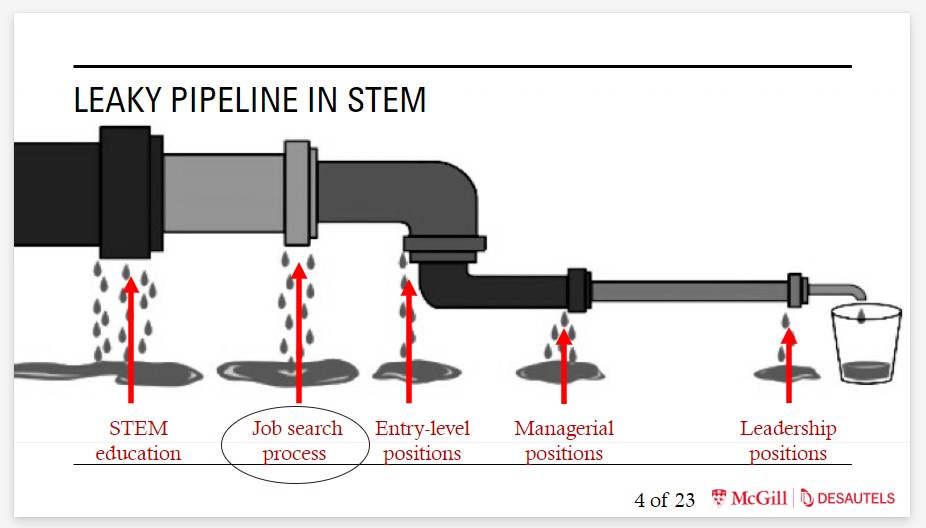Women 'scouting' to find career success: here's how HR can help

Employer-led networking, when done right, can be a powerful tool to recruit women, according to researchers from McGill University’s Desautels Faculty of Management.
While hiring managers often attribute the challenge of achieving gender diversity to a perceived lack of female candidates, this perspective overlooks a critical fact: the potential alienation of female candidates during the job search process, say PhD student Janani Ramesh and associate professor Elena Obukhova.
It’s at that first stage of recruitment where this lack of belonging sets in, says Ramesh, and it follows women throughout their careers.
“Despite all the conversation around DEI, why is it that women still feel this sense of alienation, and why are they still voluntarily quitting their careers, and why are they stating, ‘I didn't feel like I belonged,’ as one of their primary reasons for quitting the workplace?” she says.
“Women are stepping out of these opportunities and the men are stepping in.”
‘Scouting’ to assess employers
This is why many women turn to “scouting” as a way to protect themselves from those negative experiences; earlier research from Obukhova and a colleague from Dartmouth College revealed that women engage in networking activities that go beyond making connections to advance their careers.
Women use scouting — mostly with other women — to assess organizations for gender dynamics and parental support: “A heretofore undocumented form of gender-homophilous networking aimed at finding employers and career options that give women a fair chance at professional success,” says the report.
“It's kind of like toxic workplace insurance — you have to do more due diligence to make sure you end up in a good place, because you can't take that for granted,” Obukhova says. “Men can take it for granted … you could be putting time and effort into developing other professional networks, or other skills; instead, [women are] making sure that you're going to be in a good place.”
‘Leaky pipeline’ in STEM
Ramesh’s STEM-focused research draws attention to the “leaky pipeline” phenomenon: the statistically high rate at which women are quitting the industry altogether.
According to research by the Center for Creative Leadership, more than half of women working in STEM leave for other careers, and almost one third leave within their first year on the job in the tech industry. This is despite over 75% of young women tech workers describing themselves as “very ambitious.”
Not only is the leaky pipeline a problem for employers, Ramesh says, but women who quit STEM jobs mid-career often need to start over in new industries, sometimes taking severe pay cuts in the process and widening Canada’s pay gap even further.

Source: Janani Ramesh
“Women tend to get a lot of advice about what they should do and they shouldn't do. This is about employers taking the first step, and making the culture welcoming and refining the process, starting from the recruitment itself,” says Ramesh.
How to use networking to recruit women
A common mistake employers make when recruiting women is alienating them at the very first stage, which is often the outreach and community networking stage, says Ramesh.
Even with organizations that tout themselves as progressive or DEI-forward, male-dominated hiring panels, or panels where women make up administrative or HR roles only, send messages to potential woman applicants that the company doesn’t value them.
“So [it’s about] having a lot of women on the recruitment panel, having conversations about gender in recruiting sessions, reaching out to and having networking events for women … not directing advice at women, but employers taking initiatives themselves to help women network more,” Ramesh says.
“HR is involved in every step of the way, and the first step they can do is more community events and more outreach and being more proactive. A lot of diversity initiatives, in my experience, are on paper and they're not taken seriously in spirit.”
‘Dirty work’ for DEI point person
There is an extra responsibility for HR when implementing diverse hiring panels that is often overlooked, Obukhova says.
Many organizations will appoint representatives of under-represented groups such as women or people of colour to be a point person for new or prospective hires. While this initiative is well-intentioned, it ends up burdening those individuals who could then present a less-than-ideal image to applicants.
“Right now, in most organizations, it's one of those non-promotable tasks. It is dirty work. This happens to women; this happens to visible minorities — there's only one African-American person in the organization, they're going to be the one who's going to speak to all African-American candidates, and that's a full-time job,” Obukhova says.
“It has to be recognized as a valuable contribution that's part of their job. It needs to be treated accordingly in a promotion remuneration process, because otherwise, recruitment efforts are not distributed equally between people.”




